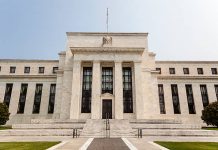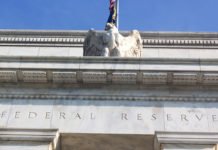Market movers today
- The US FDA’s advisory board is meeting today to discuss the Moderna vaccine.
- We have several central bank meetings coming up. We do not anticipate a sudden change of course from Norges Bank and we expect it to repeat the formulation that the policy rate will be unchanged ‘for some time ahead’.
- The Bank of England meeting today is one of the ‘smaller’ ones. Bank of England extended the QE programme at its last meeting in November. What it does next depends on the outcome of the Brexit negotiations.
- Early Friday morning, we expect the Bank of Japan to extend its emergency lending facilities beyond the current run-off date of 31 March 2021. We expect the yield curve control policy to stay unchanged.
The 60 second overview
Vaccine. Based on the FDA report released on Tuesday, which found the vaccine safe and effective, we expect the advisory board to vote in favour of emergency use authorisation. If so, the vaccine is on track to get the EUA on Saturday (if the process follows the same playbook as for the Pfizer vaccine last week). We expect the vaccination process with Moderna to start early next week.
Fed sticks to the path. As expected, the Fed kept monetary policy unchanged at its meeting yesterday. The Fed maintained the target range at 0.00-0.25% and the median ‘dot’ continues to signal no rate hike through 2023. On QE, the Fed changed its forward guidance but did not make the ‘twist’ as some had expected by buying more in the longer end. The Fed now says it will continue to buy at least USD80bn of US Treasuries and USD40bn of mortgage-backed securities ‘until substantial further progress has been made’. So basically, signalling no rate hike in coming years and continued bond buying at the current pace for a long time. The Fed thinks the economy will struggle in coming months due to COVID-19 and restrictions but that the outlook for H2 21 is much better, as the vaccination process has started (in line with our view).
Weakening dollar. EUR/USD went through 1.22 yesterday on unexpectedly good European manufacturing PMIs. Overall, expectations are rising with respect to a Brexit deal, additional fiscal easing in the US (although, a ‘small’ package) seems likely, vaccines are well on track and this is, in the eyes of the market, plentiful to offset a Q4 that has been held back by re-imposed broad lockdowns. At the Fed meeting, we saw little that rocks the boat in terms of surprises. If any, we need more clarity around the above factors and especially vaccine rollouts and potential impact on labour markets before any changes from the Fed come about. Perhaps between Q1 and Q2 we can see the initiation of a new story but surely not yet. All in all, EUR/USD is likely to remain above 1.20 into Q1 (and likely to be higher than where we are today in the coming two to three months). This should support Scandinavian FX too. Overnight, we have seen EUR/USD rise further.
Equities. Equities were generally firm on the back of good PMIs and a dovish Fed.
FI. Yesterday, European yields rose 4-5bp from the long end of the curve on the back of stronger than expected European PMI data. Initially, 10Y US Treasury yields also rose, but later they declined as the Federal Reserve will continue to provide monetary stimulus through a historical low policy rate as well as continuation of the QE in both government and mortgage bonds until there is substantial progress on inflation and the macroeconomic outlook.
FX. EUR/USD went through 1.22 yesterday on unexpectedly good European manufacturing PMIs. EUR/GBP moved lower in early European trading on optimistic Brexit comments from the EU and was about to break below 0.90 again but ended the day nearly where it started at 0.903. In Scandi space, the EUR/SEK downtrend is intact with the cross trading below 10.20. EUR/NOK ended the day below 10.60.
Credit. The overall mood remained decent in credit markets yesterday where iTraxx Xover tightened to 247bp (-2bp) and Main to 48bp (-½bp). IG cash bonds widened around 1bp, while HY tightened around 2bp on average.
Nordic macro and markets
In Sweden the November LFS survey will give us some more information about how Q4 has developed through hours worked. With this number, we will have two-thirds of the Q4 numbers. Also important to keep an eye on short-week furloughs, which last month were at the lowest level (77,000) since the beginning of the crisis. Further restrictions were imposed at the end of October, which might have increased the November furlough numbers. However, we have seen no signs in the weekly statistics of a deteriorating labour market despite the new restrictions. Regarding the unemployment rate, we forecast the trend down will continue with an unemployment rate at 8.4% s.a from earlier 8.6% s.a.
The November HOX property price index is expected to show a slight increase as seen in other data. We expect house prices to outrun flats as the general trend is for bigger living space on the back of the ‘work-from-home’ trend.













